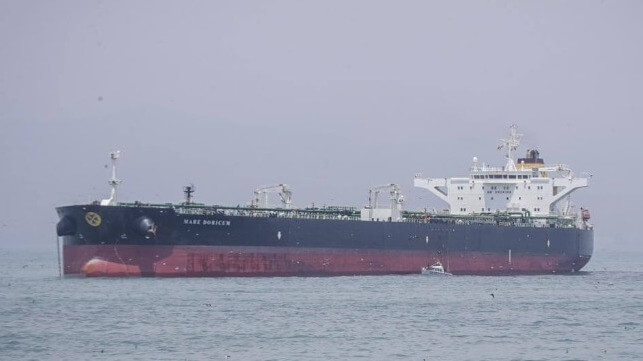Peru Seeks Extradition of Tanker Captain from January Oil Spill

Prosecutors in Peru confirmed that they are seeking the extradition of the captain of the Italian-flagged tanker Mare Doricum back to Lima as part of the ongoing investigation into what they are calling the worst oil disaster in the country’s history. Giacomo Pisani was in command of the Suezmax tanker that was unloading its cargo of crude oil to the Repsol facility on January 15 when the oil spill occurred.
The tanker was moored at an offshore facility on January 15 in the process of discharging its cargo when Repsol contends it was struck by underwater currents caused by a volcanic eruption thousands of miles away on the island of Tonga and the resulting tsunami. Approximately 12,000 barrels of oil were released into the ocean impacting 28 beaches across 86 miles of coastline. The Peruvian government recently contended it directly and indirectly impacted more than 700,000 residents causing extensive economic losses and environmental damage. A massive cleanup operation is ongoing.
The Peruvian prosecutors contend that the captain left Peru on March 9 hours after a court was asked to detain the captain in Peru along with seven Repsol executives, including the managing director in Peru, as part of the investigation. Peruvian officials have repeatedly said they were investigating criminal charges against the executives.
Fratelli d’Amico, owners and managers of the Mare Doricum (158,000 dwt), confirmed that Captain Pisani and the chief officer of the vessel both decided to leave Peru stating that they did so of their own decision and that there was no legal impediment in place at the time to prevent them from leaving Peru. The shipping company further says that the captain and chief officer had both been scheduled to return home after the cargo was unloaded as they had completed their employment contracts. Since their contracts had been completed, the officers were acting on their own as the company no longer had responsibility for their movements.
It is further contended that the captain fully cooperated with the authorities while he was in Peru. He attended court hearings and was interviewed by the public prosecutor, harbor master, and the Peruvian Congress. The prosecutor’s office said yesterday that they want the captain to remain in Peru while the investigation is ongoing but that it was not impeding the investigation as testimony would ultimately be required in court.
The request to bring the captain back to Peru is the latest in a series of recent actions by local officials. Last week, Peru announced that it had filed a civil lawsuit over liability for the economic harm caused to residents and businesses. Peru said it was asking the court for $4.5 billion in damages. In March, Peru also moved to extend the detention of the tanker. The vessel was initially released by the harbor master in mid-February but remains at the time in the Callao anchorage.
The shipping company said it believes that the vessel’s presence in Peru is no longer necessary. They said the vessel has cooperated and provided records including data from its VDR (Black Box) and video cameras. They said the vessel has undergone three underwater inspections as well as an inspection of its equipment by class society RINA.
Saying that the investigation into the cause of the incident is ongoing making it “premature for any bold statements of liability,” Fratelli d’Amico also contends there are points that have been overlooked or are incorrect in the reporting and statements. They are saying that the cause of the rupture is yet to be determined.
They contend that the vessel followed its mooring plan and was brought into position by pilots and the terminal’s loading master using the same mooring arrangements deployed previously for about 800 vessels. They noted that the pilot who should have remained aboard left after the vessel was moored.
Mid-afternoon on January 15 they said one of the mooring lines on the vessel parted but that the Mare Doricum remained secured to all five mooring buoys. They highlight that the line that should normally have taken 10 minutes to replace took more than an hour, and while the mooring plan was designed for southern currents the vessel was struct by underwater currents from the north. As soon as oil was detected they report all three pumps were shut down on the vessel. They do not know what was done at the terminal and they report that while the hoses from the underwater offloading facility are still being investigated it appears that there were not fitted with either an automatic decoupling/non-return safety valve or marine breakaway coupling. They are denying reports that the vessel struck and damaged the underwater facility. They point to the surveys which show no hull damage to the vessel.
